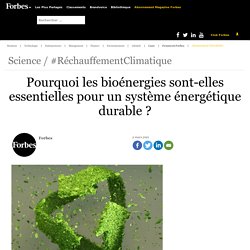

China’s New Green Target Still Means Pumping Too Much Pollution. Photographer: Qilai Shen/Bloomberg China’s first road map to achieving net zero emissions by 2060 may be too slow to stop the world’s biggest polluter from hastening global warming.

Thousands of Chinese delegates applauded when Premier Li Keqiang stood in the Great Hall in Beijing at the start of the National Party Congress on Friday and said the country will act strongly on climate change. The country’s 14th five-year plan, released later that morning, was awash with ways to increase the use of renewable energy by 2025. Explore dynamic updates of the earth’s key data points But when it came to greenhouse-gas emissions -- the key metric that will determine whether the world reins in a global temperature increase -- Friday’s announcements were disappointing.
“To tackle the climate crisis, China needs to bring its emission growth to a much slower level,” said Li Shuo, senior global policy adviser at Greenpeace in Beijing. Plan Details Among the energy and climate goals announced are to: Le Sommet mondial de l'Alliance : Énergiser au-delà du charbon, coorganisé par le ministre Wilkinson, témoigne de la dynamique dans le monde en faveur de l'élimination progressive du charbon et renforce la détermination à accélérer l'action.
APL Énergies. Sixième activité de la 48e saison 2020-2021 Jeudi, 18 mars 2021, de 12h30 à 13h30 Conférence virtuelle « L’hydrogène vert au cœur de la stratégie de Gazifère visant à devenir le premier réseau de distribution d’énergie par canalisation 100 % renouvelable » Jean-Benoît Trahan Directeur, Région de l’est, Enbridge/ Directeur général, Gazifère Frédéric Verlez Vice-Président Principal, Développement commercial et stratégie, Evolugen.

Pourquoi les bioénergies sont-elles essentielles pour un système énergétique durable ? Le Centre commun de recherche (JRC, Joint Research Centre) de la Commission européenne a récemment publié un rapport sur l’utilisation de biomasse forestière pour produire de l’énergie au sein de l’Union européenne (UE).

Selon ce rapport, il est primordial d’engager une discussion honnête pour « clarifier le débat autour de la durabilité des bioénergies tirées du bois ». Cet appel arrive à point nommé. Les avis sont partagés quant à la neutralité climatique des biomasses comme source énergétique, et nombreux sont ceux qui se laissent influencer par des interprétations subjectives ou par leurs intérêts personnels. Ainsi, lorsque des articles scientifiques sont cités, les faits sont souvent exposés hors contexte. New project researches 3D printing for wind turbine blades - Canadian PlasticsCanadian Plastics.
Photo Credit: GE Research GE Research, GE Renewable Energy, and LM Wind Power were recently selected by the U.S.

Department of Energy (DOE) to research the design and manufacture of 3D-printed wind turbine blades. The GE business units will partner with the Oakridge National Lab and the National Renewable Energy Lab on a 25-month, US$6.7 million project to develop and demonstrate an integrated additive manufacturing process for novel high-performance blade designs for the future of large rotors. The project – which was awarded by DOE on Jan. 13, 2021 – will deliver a full-size blade tip ready to be structurally tested, as well as three blade tips that will be installed on a wind turbine. Renewable Industries Canada Submits Comments on Government of Canada's Proposed Clean Fuel Regulations.
OTTAWA, March 05, 2021 (GLOBE NEWSWIRE) — Renewable Industries Canada (RICanada), representing business leaders in renewable fuel production and technology welcomes the opportunity to comment on Canada’s draft Clean Fuel Regulations (CFR).

RICanada supports a national policy for cleaner fuels and believes an environmentally viable and economically realistic path to decarbonization by 2050 is possible provided policies, like the CFR, are well designed and properly implemented. As part of the multi-year CFR consultation, RICanada provided input to ensure the policy works for fuel producers, fuel suppliers, agriculture, and consumers. Le Canada s’emploie à mieux faire connaître les véhicules à pile à hydrogène. Why the hydrogen hype may be overblown. For those who lived through the tech bubble of the late 1990s, the renewed enthusiasm for all things hydrogen has likely brought a sense of déjà vu.

Two decades after fuel cell mania sent shares of companies such as Vancouver-based Ballard Power Systems Inc. soaring – only to crash when the technology failed to live up to its promise for commercialization – investors are betting that the time has finally come for the universe’s most abundant element to play an important role in tackling climate change. “It really is a case that 20 years ago hydrogen looked interesting but was ahead of the time,” said John Bereznicki, an analyst with Canaccord Genuity in Calgary. “The political will to decarbonize has evolved.” L’Association canadienne de l’énergie renouvelable appuie les ambitions du gouvernement du Québec - Canadian Renewable Energy Association. Setting a course to Canada’s clean hydrogen economy. As Canada and the world look to achieve more ambitious climate targets, accelerating the transition from fossil fuels to lower-carbon and carbon-neutral energy sources is more important than ever.

Today, hydrogen is increasingly being discussed as a promising fuel that could reduce the amount of fossil fuels burned in several sectors, such as transportation, buildings, and heavy industry. However, the climate benefits of hydrogen are highly dependent on how it is produced. The carbon intensity associated with hydrogen ranges from extremely low when it’s made with renewable electricity to very high when it’s derived from fossil fuels.
The best use of hydrogen is in hard-to-decarbonize sectors where electrification isn’t a good fit. Today, more than 99 per cent of all hydrogen is “grey,” meaning it is produced from fossil fuels, usually natural gas, with no carbon capture and comes with a high carbon intensity.